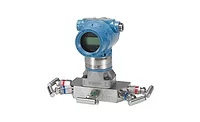Instrumentation & control
Use the right instrumentation to improve batch manufacturing
Ditch the antiquated clipboard and meet quality and regulatory demands with digital instrumentation, and get more consistent batches

Most manufacturing for food, beverage, and life sciences companies is batch production, with the scale ranging from tens-of-thousands of gallons, such as for major commercial beer brewers, down to a pound or less of a specialized pharmaceutical active ingredient. Regardless of scale and complexity, batch manufacturers must maintain consistency and control.
Consistency relates to both the product itself and the manufacturing process. Whether beer or a headache remedy, customers want a given product to be the same every time they purchase it. Manufacturers want every batch to turn out the same way as well. When the same ingredients are mixed in the same proportions and processed the same way, the effort should yield the same product. Yet, complications often emerge due to lack of consistency of ingredients combined with the difficulty of maintaining effective process control.
If the recipe calls for the mixture to be heated to 85 degrees Celsius and held at that temperature for one hour, operators must have the ability to produce those conditions as needed, or have the ability to change the process intentionally as may be necessary to achieve a desired outcome. The key to all of this is intentionality. Nothing should be left to chance or guesswork.
These concepts apply to any batch processor, but for food, beverage, and life sciences, which we’ll refer to as hygienic industries in this article, there is an additional layer of concern regarding sanitation and other aspects of product purity. Ingredients and finished products must be handled and stored in ways that ensure they do not spoil or become contaminated, and equipment must be cleaned to avoid causing such problems. Some of these processes are driven by regulations, but also by a manufacturer’s basic desire to deliver quality products reliably. The requirements for most hygienic equipment are well known and understood, but users might have to do some searching to find the right instrumentation capable of meeting standards for configuration and finish, along with applicable regulatory certifications.
Instrumentation is the key
Achieving consistency in a manufacturing environment, particularly a hygienic environment, requires effective instrumentation since something that cannot be measured cannot be controlled. Using the previous example, if the recipe calls for heating a batch of product to 85 degrees Celsius, plus or minus 2 degrees, and holding for some period, operators must have accurate and reliable instrumentation to know when that temperature has been reached and how to maintain it in the tolerance band. Too high of a temperature wastes energy and could overheat the mixture. An excessively low temperature may result in an incomplete reaction or inadequate microbial control.
Two process variables—pressure and temperature—play a major role in food and beverage manufacturing. Let’s consider how each can be improved for more effective performance.
Multiple roles of pressure
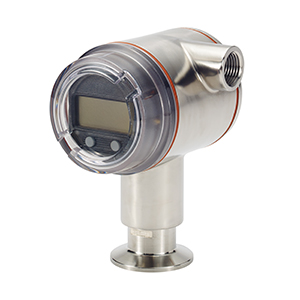 |
| Fig. 1: Pressure instruments for hygienic applications typically have external flush diaphragms to satisfy cleanability requirements. Source: Emerson |
Within hygienic industries, pressure instruments (Figure 1) are used routinely to measure level as well as pressure. A differential pressure (DP) level instrument can provide an accurate measurement of volume for inventory management. But more importantly, it can measure critical changes in level to determine volume for adding ingredients, provided appropriate compensation can be made for liquid density factors.
Whether used for a direct pressure measurement or DP level, pressure instruments represent one area where users can unwittingly introduce inconsistency into their process due to drifting transmitters caused by thermal shock. When a batch run is complete on a production line, it is followed by a cleaning process—typically clean-in-place (CIP) and possibly sterilize-in-place (SIP)—using a hot cleaning solution, water, and/or steam that can subject the pressure instrument to a high-temperature excursion for a time before returning to its normal condition. Similarly, a pressure instrument may also be exposed to high heat during a cooking process within a pressurized vessel.
Most electronic pressure sensing technologies are affected by temperature, so the signal processing circuits in the transmitter measure ambient temperature and make an internal correction for accurate and consistent readings across the full operating range. Low-cost instruments may be effective for such applications to some extent, but repeated temperature excursions can create a permanent shift over time if the instrument’s sensor is unable to recover fully and return to its calibrated value.
Within the hygienic industries, instability becomes a particular problem. Instrumentation manufacturers publish a stability specification, but it does not always consider the hard treatment common to this environment. Pressure transmitters subjected to the rapid and drastic temperature changes common to CIP and SIP procedures can lose their stability and allow significant reading displacement. Some users simply accept drift over time as a fact of life that must be controlled with frequent calibrations. This does not have to be the case, however, because available instruments can maintain stability with less than 0.2% drift per year even in these difficult applications, batch after batch, cleaning cycle after cleaning cycle.
Improved temperature measurement
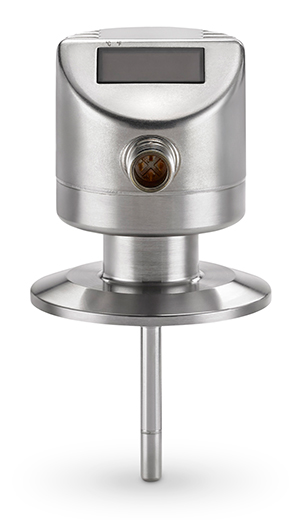 |
| Fig. 2: Temperature instruments, whether integrated units or using separate thermowells, can be mounted using hygienic connections. Source: Emerson |
For most companies, the days of thermometers are long past, replaced by electronic methods including thermocouples (TCs) and resistance temperature detectors (RTDs). These provide an analog voltage or resistance value, respectively, in response to the process temperature. For many applications, an instrument with an integrated temperature sensor and transmitter can be inserted into a pipe or vessel via a tri-clamp process connection (Figure 2). With a separate thermowell, the instrument’s temperature sensor can be inserted and removed as necessary, even while the process is in operation. These setups can be very accurate and consistent if executed well, but two specific considerations can improve performance.
First, if the sensor and thermowell are not an integral unit, the sensor sheath and thermowell bore should be matched to ensure direct and consistent heat transfer from the process liquid through the thermowell and sensor sheath to the actual sensing element. The amount of empty space within the thermowell must be minimized to improve heat transmission. The back of the sensor sheath can be supplied with a spring to push the sensor all the way to the end of the thermowell so it will make direct metal-to-metal contact.
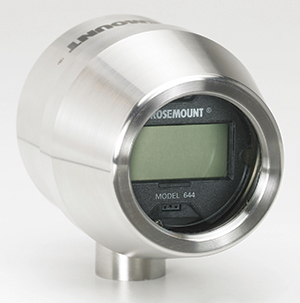 |
| Fig. 3: An instrument’s transmitter mounted at the sensor can improve signal integrity and capture diagnostic information. Source: Emerson |
Second, at the head of the thermowell, it is possible to add a temperature transmitter to convert the output of the sensor to a 4-20 mA plus HART® signal (Figure 3). The sensor can then send diagnostic information to the automation system via the transmitter to warn operators if there is a problem developing with the sensor, which might affect the validity of the reading.
Operators might want to use redundant sensors to increase reliability in their processes. Redundancies can be realized using two sensors in a single thermowell with a single transmitter (Figure 4), or by using two separate assemblies with thermowells and sensors. Redundant sensors enable the opportunity for a sensor backup, where a common transmitter is able to move from one sensor to the other automatically in the event of a problem.
Dual sensor transmitters can also provide extra diagnostic capabilities by comparing the measuring elements to each other over time to ensure that the sensors aren’t drifting out of specification. These extra features can avoid a spoiled batch due to a failure while in operation, and ensure operators and the automation system get the kind of responsive temperature data needed to control a heating or chilling step effectively. The cost of the hardware is likely higher initially, but it will require less maintenance and create fewer headaches in the long run. Engaging a knowledgeable vendor early in the selection process before decisions are cast in stone can guide these efforts.
Better instrumentation
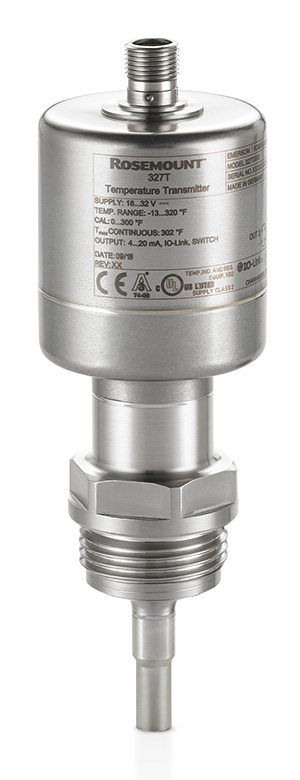 |
| Fig. 4: Some temperature instruments, such as Emerson’s Rosemount 327T, have dual elements that can serve both as a backup and for self-diagnostics. Source: Emerson |
As discussed, effective instrumentation is essential to maintaining consistency and control, but there are additional benefits. The need for maintenance and calibration is reduced since individual temperature and pressure instruments can run longer without attention. Calibration becomes a process of verifying correct performance instead of requiring tweaks to the instruments or creating cumbersome manual correction factors. Routine manual calibrations at the start of a new batch are no longer necessary.
Furthermore, when a process is being certified or recertified after a change, advanced instrumentation can make the evaluation easier since it ensures more consistent performance over time. Once this stability is proven to regulators through actual experience and reliable vendor history, it becomes far less of an issue. All these elements working together show the importance of effective instrumentation in the larger manufacturing picture.
References
- Rosemount 3051HT Hygienic Pressure Instrument
https://www.emerson.com/en-us/catalog/rosemount-sku-3051ht-hygienic-pressure-transmitter
- Rosemount 327T Temperature Instruments
https://www.emerson.com/en-us/catalog/rosemount-sku-327t-temperature-transmitter
- Rosemount 326P Pressure Instrument
https://www.emerson.com/en-us/catalog/rosemount-sku-326p-pressure-transmitter
Looking for a reprint of this article?
From high-res PDFs to custom plaques, order your copy today!





